The Developer Shapes of Tomorrow, Today
You’ve probably heard of T-Shaped developers, but have you heard of all the other shapes we can be?
trigger warning: page may be hazardous to vampires or entities known to have intersecting right angle visual processing defects.

Wikipedia Redux
The source of all knowledge has a sparse article on T-Shaped people/skills/developers/engineers, so let’s summarize it here.
T-Shaped was defined by McKinsey in the 80s then further popularized by IDEO in 1991, then popularized more by Valve in 2012.
Because MBA / consultant / management science is fundamentally broken, all these terms mean the same thing:
- T-Shaped
- Versatilist — language gone wrong, dreamed up by Gartner
- “Generalizing Specialist” — “more skilled than a single generalist or a single specialist”
- “Technical Craftsperson”
- “Renaissance Developer”
- “Master Generalist”
- “Muti-disciplinary Developers”
- “Cross-Functional Developers”
- “Deep Generalist”
- “Full Stack” — developers are expected to work in all the subsystems — ALL THE SYSTEMS!
If you are ultra special, you could even be one of:
- “X-Shaped” (only for leaders)
- “I-Shaped” (tech nerds who have no social skills)
- “Tree” — like a tree, you contain multiple branches of knowledge
- “Multiple Mountains shaped” — “overlapping skills”
- “Gamma (Γ)” and “Mu (Μ)” — people who aren’t computer/technical/programming specialists, but know enough to do their own technical analysis work without needing additional “data support teams”
What’s the bar?
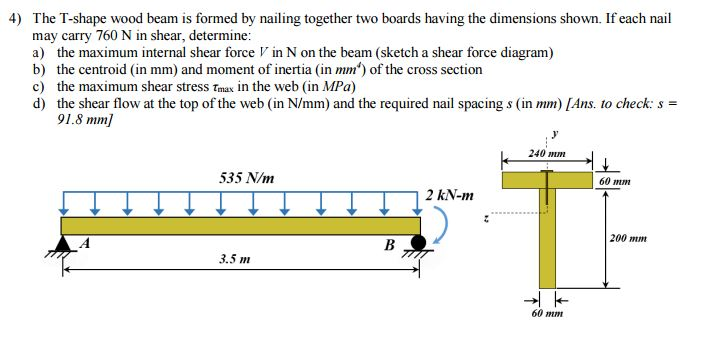
Nobody can agree on what the flat top bar of a T-Shaped person means.
Some people argue the bar represents the width/breadth of a person’s professional experience in multiple technical areas.
Other people argue only the I part (the “depth”) of the T is technical experience, while the broad top is exclusively for soft social “people skills” and “networking.” There was a documentary about these differences a while ago pointing out the ludicrous assumption technical people have no professional social skills so must be isolated and protected from the greater business at all times (which also leads to technical people sacrificing their visibility, autonomy, and upward mobility).
Other other people argue only X-Shaped people can be trusted with interpersonal interactions because “multiple arms of the X represent a person with good interpersonal skills and can work with different people across different industries or areas of a company.”
One article goes so far as to point out in a pithy condescending tone, “I-shaped skills mean the individual is knowledgeable/skilled in a certain area but hasn’t mastered the ability to collaborate.”
Given there’s no standard definition of anything, plus considering how corporate hiring is endlessly broken, how do we competently illustrate to companies we’re fully actualized technical/business/corporate/capitalist-pig people?
Nurture, Nature, or Nepotism?

Stepping back from undergrad MBA hallucinations about compressing the high-dimensional vector of personal and professional experience of professional life into ur a T!!! now how many manager scrabble points do i get?—what causes a person to express traits leading them to be categorized as a reductive shape?
The question nobody wants to ask is what factors cause marketable skills to manifest in people.
Nurture
To what extent are breadth and depth of your skills a product of:
- your historical life circumstances
- affluenza? $50k Montessori boarding schools then off to a top-3 university? your parents worked at biglaw and bigtech for 30 years?
- disadvantaged childhoods?
- did you grow up in one of millions of family dynamics poisoned by opioid pharma practices?
- did you grow up with a strong accent you can’t shake and people judge you for it now?
- your current life circumstances
- going through personal problems? sick family?
- great personal support systems vs. lack of personal support systems?
- your professional history
- or, any/all combinations thereof?
A high-class hyper-stable nurture environment often can generate more stable professional outcomes, and it allows people to be specific experts in narrow fields. When you have an unshakable support structure where you’re always safe, you know you can take specific risks without worrying about broader problems.
On the flip side, a less stable nurture environment may lead people to be a hyper-generalist where, because maybe there isn’t enough trust and stability to support their goals, they have to be aware of, and quite productive, at potentially multiple fields of study or inquiry or expertise at once.
Nature
To what extent does just your baseline personality impact your curiosity, determination, ambition, and utility?
What’s your specific balance of extrovert vs. introvert?
What’s your scale of anxiety, being confrontational, conscientiousness, asd, kinsey, socially inviting vs. socially hostile?
Do ADHD + ASD spectrum people end up being more generalist because they get rewards from task switching, while also at the same time often go into multiple-month deep-dive sessions where they become experts in micro-fields, then surface back to reality for new broad/deep goal re-targeting again?
As compared with, say a traditional “Oracle DBA” where your only job is to install Oracle, optimize Oracle-Approved SQL statements, and maybe monitor memory usage—all just doing the same scope-limited role for 10 years?
Nepotism
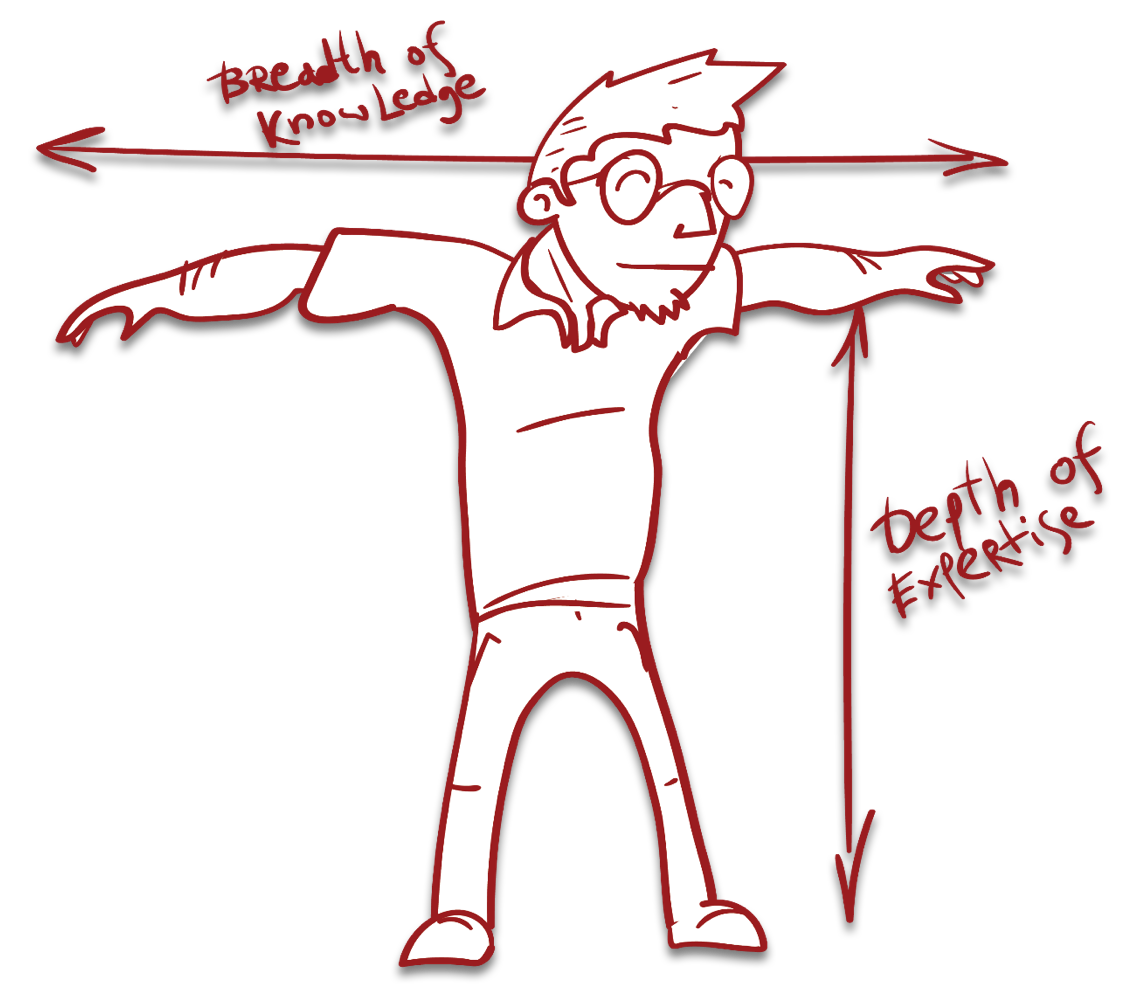
In a hiring context, any marginal skill insecurity can be immediately resolved by knowing people in high places to place you in jobs with minimal hiring evaluation just to see “if it works out.”
After all, experience compounds, and the most impactful way to be successful later in life is to be successful earlier in life.
The practice of “lowering the entry bar for your friends” gives your social group an easy 2x to 100x advantage over the general population because it’ll boost your job history, your skills, your connections, and your eventual life outcomes.
Then, over the course of lifetime employment, you’ll likely never be asked about how you happened in to your previous positions. Nobody evaluates candidates on the grit of their previous accomplishments vs. the extent of social fraternizing handouts.
Maybe Candidate A has an amazing history, but every time they switch jobs, they have friends at other big companies who give them hiring priority, so they get to “skip the line” and end up with 5 IPO exits as an employee over 10 years. Meanwhile, Candidate B always follows the default “submit resume to job site” hiring flow, and, even though they worked at 4 startups over 15 years, they never reach any liquidity event whatsoever, then every new job search resets back to square zero.
Don’t be a square zero.
What Makes A Letter
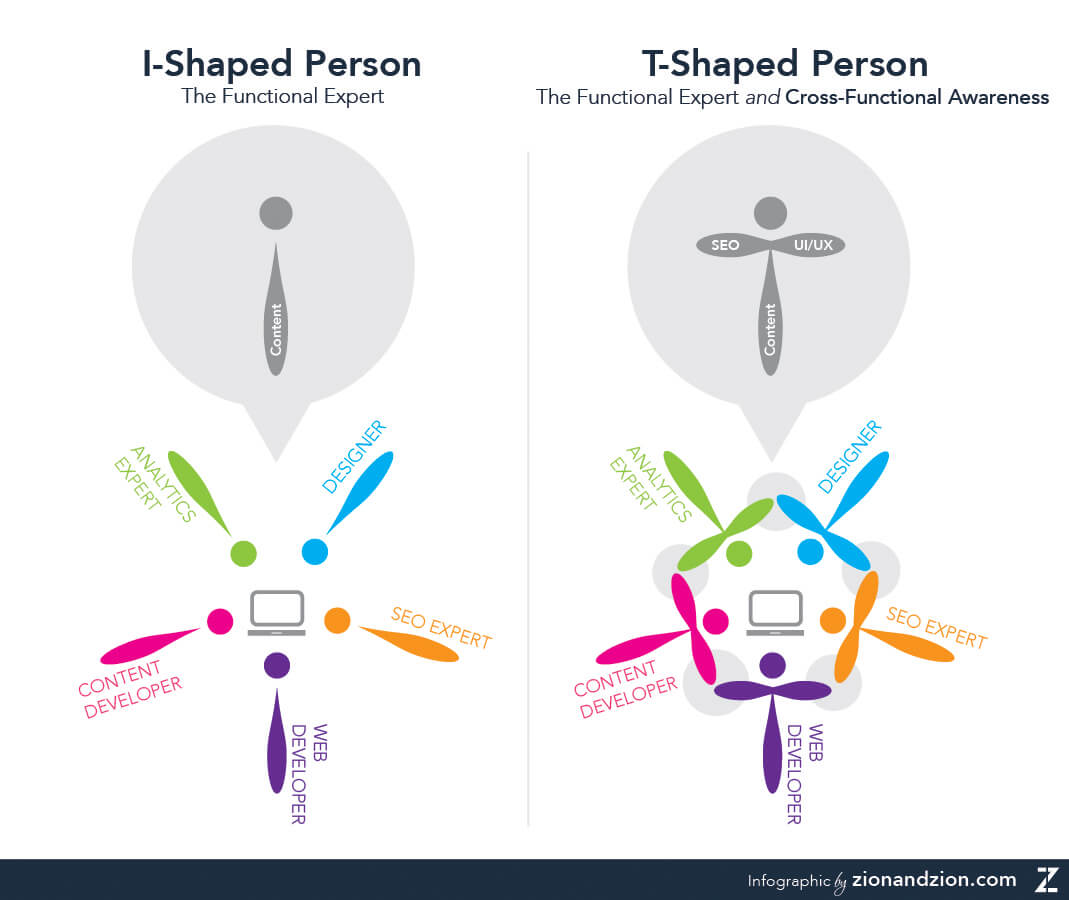
If we want break down components of labor utility, we first have to pick a lane:
- does the top of the T-Shaped person represent actual additional skills
- or, does it represent buckets of “soft skills” like “being able to communicate” or “ethics” or “planning” somewhat tangential to your actual concrete field of employ?
We’d expect everybody to have “ethics” and “communication” and “planning” capability, right? Those skills shouldn’t be isolated out into a super-employee class of T-Shaped Many Angled Ones.
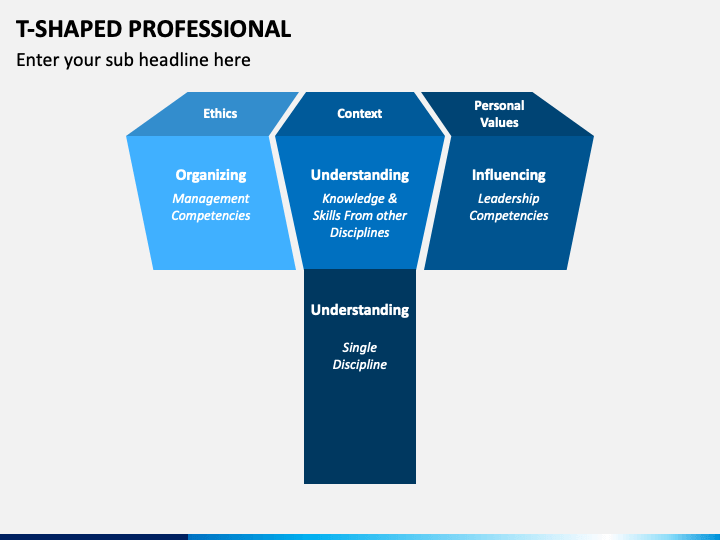
For our arguments, we’re going to say the width attribute of “T-Shaped” means only having a broad scope of knowledge outside the direct field where you may also have deep dives into extreme expertise.
The other viewpoint where “T-Shaped” means “nerd in one area, but can be social/business in other areas” is insulting in assuming people who have “soft skills” are somehow unicorns among a mass of slovenly “regular” employees bozos incapable of communicating or acting like a human because they are only task-specific capital deployed on-demand by unknown forces summoned by the invisible hand.
How Many Legs
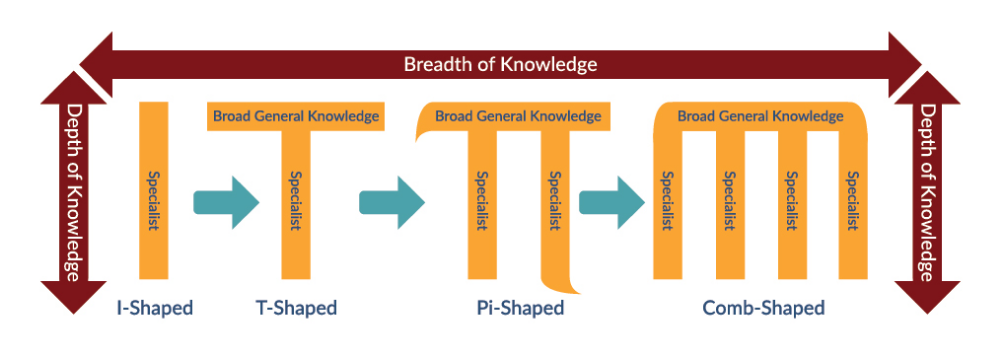
Once you start pegging people as “T-Shaped” a second thought becomes, “okay, so what if people are good at more than one deep subject?”
Say hello to the pi-shaped and comb-shaped people.
The next question becomes: what represents “knowledge” in the shape? Are these histograms of skills (in what units?) or are these shapes just rectified quantization of ability?
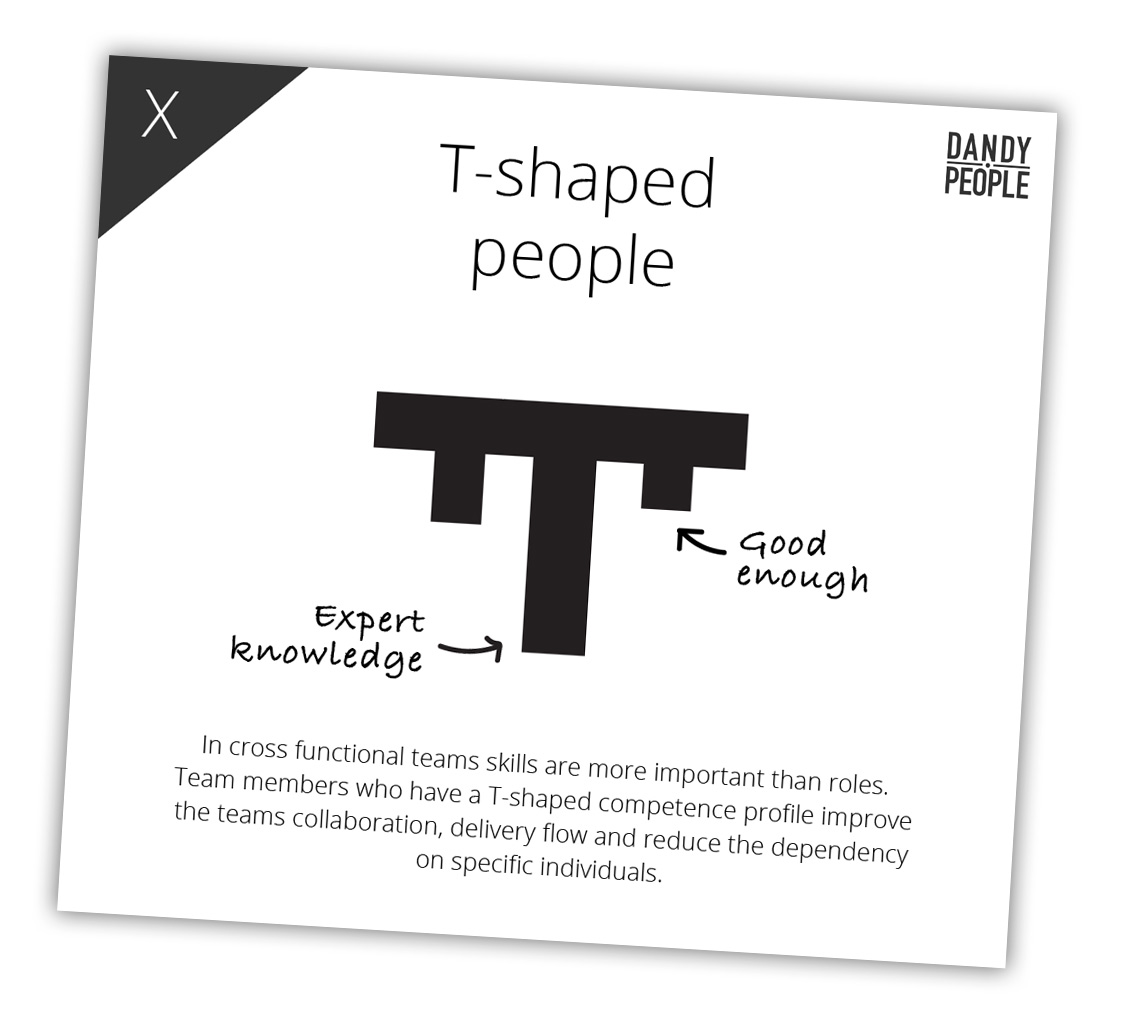
Additionally, what constitutes “ability” or “expert?” At least for me, I go through phases of knowing things in all-consuming detail for a couple weeks when deep into a problem, then moving on a couple weeks later and losing immediate recall of what was previously a wholly immersive experience. Does creating past “I did great work in this area” artifacts count towards experience if you can’t reproduce your work or thought processes on-demand in interviews?
I’d argue capable ambitious dynamic creative people are frustratingly beyond the evaluation capability of default big corp hiring loops because with a huge history of experience, you aren’t I-Shaped, T-Shaped, Pi-Shaped, or even 8-leg comb shaped.
With a growing portfolio of expertise in multiple areas over time, you become: Cleat Shaped Developer™
Embrace The Cleat

Cleat-Shaped developers have sharp and deep expertise in potentially dozens of contexts while also remaining a fully realized multi-domain knowledge worker in areas ranging from creating hardware-optimized data structures to jumping into customer-facing roles as temporary sales engineers or client escalation contacts as needed.
The huge hiring problem with Cleat-Shaped developers is naive big corp recruiting practices will see your skill set, then rank you at the lowest level possible based on your recent experience. “Oh, your recent experience was doing customer escalation and best-in-the-world high-concurrency cutting-edge software development? We will interview you to be a level II on call customer support engineer!” — You try to explain the previous customer contact experience was because you are customer focused and wanted to provide the best outcomes for users, and not because you are literally an on call customer service rep, but by then you are 8 weeks into the hiring process and they don’t believe you are actually good at anything other than entry-level quarter comp work. check please
Cleat-Shaped developers have the ability to hop from deep-knowledge task to task at varying levels of complexity. Maybe you need a new eBPF observability interface developed this week, performance improvements made to your JavaScript websocket chat router next week, statistics run over your CDN logs for the quarter by writing a 32 server ETL ingest pipeline then generating reports from your OLAP cluster, customer requirements gathering done on-site in Singapore next month, and also research into why your aws elb bill is $100k/month and what you can do about it (which you then discover you can spend another two weeks writing a custom single-purpose load balancer in Zig and save your company $1 million a year in aws overhead).
What management stereotype shape is all that? The shape of Cleats!
Cleat-Shaped people operate via lil’ bits of deep temporally significant expertise which may wax and wane as underlying needs for attention and performance demands change over time.
Cleats vs. Henges
If cleats are too sharp for you, an alternative is also to become a Henge-Shaped Developer, which also implies a more long-lasting, rigid depth of expertise rather than perhaps two dozen deep but sharp Cleat expert lineages.

See the sameness? A buncha I/T/Pi/Comb shaped things all living together to be more impressive than any single element standing alone, but still part of a cohesive whole even though not directly connected.
Also a scary metaphor for knowledge decay and skill gaps developing over time which need to be polyfilled back into complete units of productivity, but we’ll ignore those personal flaws and failings of society for now.
How Can We Evaluate Cleats?
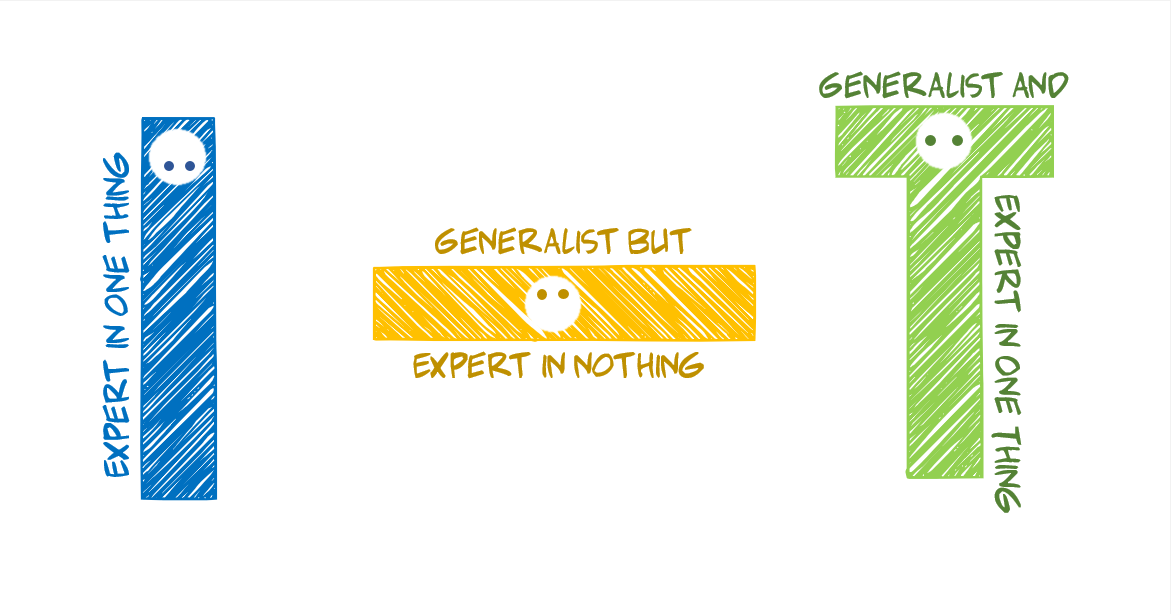
What does it mean for a company to evaluate an interview candidate who may have two dozen areas of expertise throughout their past, some of which no longer relevant (rip flash developers 1995-2015), but still shows an unbroken pattern of capability ambition and determination to create great things?
If you’re a big tech hiring company these days, you never answer such a question because you only seem to care about two things: immediate in-brain programming trivia plus 7 hour long “culture fit” questions which feel more like invasive scientology blackmail intake sessions rather than giving you a chance to advocate for your next eight figure comp role.
What do we think the median capability of a person applying for senior jobs at a big tech is these days anyway?
Or, more dangerously—what do we think the median capability of people actually working at big tech for $700k+/year is these days1?
The big tech hiring mantra over the past ten years selects for a very specific type of ability to such an extent there’s a hundred books—and even entire college courses—dedicated to just “hacking the google interview” via self cram school. After all, we’ve got what you want, and we tell you what we want, so you must do what we want, right? Google only hires the best, after all.
If we were given a chance to call a do-over on the entire big tech “fake GRE as fast as you can” interview style to actually evaluate people based on their historical merits and current life circumstances and abilities—what would such a system look like?
Hiring is Deciding, and Deciding is Acting
I feel tech society has lost touch with the purpose of the hiring process: decide to hire people.
Decision making about other people is never going to be exact, but big tech hiring tries to excessively data-ify the process of evaluating people in attempts to remove human judgment from the process of judging humans.
At some early point in the hiring process, you—as a hiring organization—have to make a decision with limited data without being afraid of outdated backwards hiring thinking. There’s no such thing as “a new hire 100% better than other new hires” because people aren’t scalar quantities, we are talent vectors.
You can’t be afraid of making positive decisions because you believe one hire will rot your entire company from the inside within 3 months. It’s not like you’re afraid of dropping new hires for no reason anyway, right?
Based on my experience as somebody who is still routinely kicked out standard big tech interview loops, I’d re-design interviews around three intake classes:
- defense
- acceptance
- desire
Intake: Defense
Defense intake is for people who have no significant provable public history so they have to, at some level, prove they are competent for the level, position, responsibility, and ambition they are applying under.
This is where short—SHORT—take home evaluations may come into play, along with basic weed-out questions involving data structures or basic operating conditions of modern systems. The questions should be relevant to the level of hiring, and this type of intake process shouldn’t be applied to anything other than entry-level to pre-mid-level positions.
Defense hiring is the level where your company should be evaluating on “I/T/Pi/Mu/Comb” metrics. If your Defense hire blows past being a deep expert in more than one or two areas, you likely want to level them up higher.
Defense Workflow:
- accept in-bound request
- contact a person
- basic competency review for role/environment/situation
- slightly more involved competency review to verify their brain isn’t mush
- reach agreement person is willing and excited to engage in new role
- shower them with minimum $550k/year comp
- generate moderate-value value
Intake: Acceptance
Acceptance is the mid-career hiring path.
Companies need people with 10-20 years practical IC experience without subjecting them to the same interview process as people interviewing five levels lower. The acceptance interview flow respects people with significant experience up front and nominally looks for conversational knowledge gaps which may suggest an incomplete work history or inadequate ambition to perform at the levels a candidate is applying into, but gaps shouldn’t be deal breakers because—now this is a shock to some companies—employees can learn, grow, and get better over time after you hire them.
The process of being hired via Acceptance doesn’t involve coding tests or eight hour background quizzes. Acceptance interviews are about basically pre-deciding your company wants to hire somebody before starting an interview process in the first place. Your only goal during an Acceptance interview cycle is to see if contact with the candidate you’re targeting actually disabuses you of your preconceptions about their abilities, ambitions, and personality traits.
If you are reaching out to a 10-20 year experience professional then subjecting them to the same hiring flow you give to 22 year old grads, your company isn’t respecting the temporal personhood of professional existence. Get your acts together, all you multi-trillion dollar companies who all have broken public software impacting billions of people every day, but still refuse to hire competent people to improve your work from the inside.
Acceptance hiring is where you want to determine how many Spikes on the Cleat your candidate has grown, and perhaps even how sharp and deep each spike may be (or how glacier-like their underhenge goes? the metaphor abides). If you are hiring someone with deep expert experience in 5 areas and mini-expert experience in 7 areas, you’ve got a keeper (and potentially an ADHD head who can be given a variety of tasks as pre-flight or post-optimize tasks to keep their goal seeking centers from saturating in boredom).
Acceptance Workflow:
- research a person or accept in-bound hiring request
- contact a person
- engage in cross-functional discussions about new projects and capabilities needing to be created
- reach agreement person is willing, capable, and ambitious enough to achieve new goals
- shower them with minimum $1.44MM/year comp
- generate high-value value
Intake: Desire
Desire is the senior to executive level hiring path.
Desire hiring is for senior ICs or for promoting senior ICs to department/division/executive heads or for hiring executive levels directly. Desire hiring can also be considered an acquisition flow. Basically: as hiring org, you’ve already made up your mind, allocated an overly generous comp budget for the role impact, now you just have to convince the hiree to be acquired by you.
As a prospective employee, the best scenario is when a company headhunts you by name. You want a company to want you before you want them. You want to be welcomed with loving arms into the home of your new infinite pot of ambition and funding big tech family.
Desire hiring is initiated from high ranking individuals—people already in the 8+ figure yearly comp club—directly requesting the company seek you out for your very particular set of skills, leading to you being hired at any cost spare no expense.
Desire hiring is a high-touch, frequent-reachout process resulting in conversational interview processes without needing to demonstrate your history on demand. Though, this process also assumes a hiring company knows the difference between people with actual ability and serial grifters who have seemingly worked their way up without ever generating meaningful value.
Desire shapes are multi-faceted and Henge-like where your candidate (or target-of-acquisition) will have stable reproducible concrete (ancient, stone-like) experience artifacts, an indefatigable sense of good directions to take for future projects, and, even if they have gaps between their Henge support columns, they know how to fill in missing knowledge (like, we know the internet exists and we know how to read books and documentation so interviewing via “X could be looked up in 3 seconds” is a waste of time), plus they help others expand their experience and share knowledge without impactful productivity downtime.
Desire Workflow:
- research a person
- contact a person
- verify willing and ambitious enough to help grow teams creating best-in-world outcomes
- shower them with minimum $3.5MM/year comp
- generate unlimited value
A shorthand for Desire hiring flow: game recognize game. You know I’m good, now convince me you are good and we can work together, for good (and for super-normal compensation, of course).
A Divergence: Tech Accelerationism
Working a “regular” job, say being a retail big box helper person, usually has constant, if not regressing, qualification requirements. If you were a Target cashier in 2010, you can likely be hired as a Target cashier in 2030 with no experience adjustment. (also curiously, after 20 years of almost no stock gains, Target has been acting like a tech startup since 2019 with stock up 250% in two years)
But in tech, the experience-over-time situation is quite different.
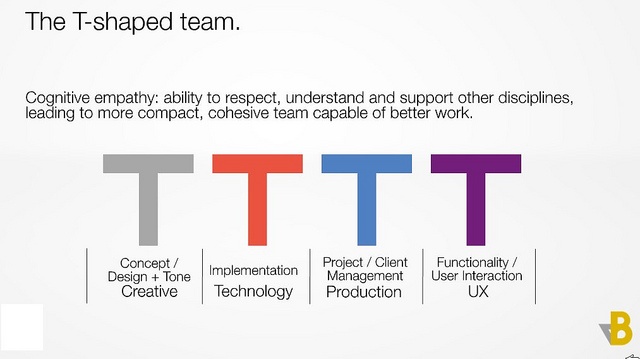
In tech, we design multi-stack, multi-year, multi-revenue platforms using complex, involved systems needing expert-level background knowledge to manage, optimize, and expose to end users efficiently—while simultaneously destroying those platforms every 3-6 years in favor of ever newer platforms.
Maybe you are the hottest hot shit ego employee of 2012 with your masterful skills in hadoop, pig, hdfs, puppet, zimbra, fishworks, cloudera, mapr, mapzen, theano, luatorch, travisci, nagios, and cacti—then by 2018, you can’t even get hired to develop a new strip mall self-serve froyo-by-weight shop tech stack because none of your tools exist anymore. Instead, somebody who entered the industry in 2017 and has spent six month deploying the new hot stack will be worth 5x your legacy 10 year experience in no time—unless you somehow manage to forget everything you know and start over as a blank slate, but then companies are better off just hiring a new batch of 16 year olds every 5 years rather than ever hiring anybody with experience.
Thus we bring upon ourselves the burden of understanding The Tech Hiring Paradox.
The Tech Hiring Paradox
In tech, there’s a pattern where high-growth startup founders reach a point where, usually after their 1000th or so new hire, they realize they probably wouldn’t be qualified to even apply to work at their own company anymore.
Upon such realization, they simply distribute their dozens of billions in equity to all productive employees then go live in the bush for the rest of their lives—record scratch—of course they don’t. They just laugh and say “haha sucks to be you losers who aren’t qualified to work at this thing i created! sorry, gotta drop off this call now to go BUY MORE HAWAIIAN ISLANDS” laughs in evil multi-billionaire tones
In any field pressurized between the two plates of innate human hedonic treadmill competition and the continual march of external technical advancement, you’ll always have “old timers” (i.e. people with more than 5 years experience) saying “uh… the new kids are too good at this with their memes and pods and clouds and autoscalers and gpus! it took me 15 years of practice, research, and implementation to create what these 21 year old new hires can bang out in a casual weekend hackathon.”
Conclusion: Back to Shapes

We’re up to 3,700 words so far, but we’re not done yet!
teh shapz
What is the point of creating developer shapes? So management can manage you into buckets.
Why does management want to manage you into buckets? To compare people against other people.
Why does management want to compare people against other people? It’s an attempt to normalize your personal value across departments with different evaluators for a reliable metric of goodness/badness at scale.
Underlying all these decisions, shapes, and metrics is the flaw: the N-dimensional descriptions of “breadth” and “depth” aren’t actually reflective of people-across-people due to individual variability of evaluations. Still, attempts to quantize people exists.
Turns out the original idea of “shapes” was meaningless because it only compares “deep expertise” to “breadth of experience,” but shapes don’t quantify what “breadth” of any “experience” means. So we end up with genius manager-cum-amateur-graphic-designer creating infographics (?) like this:
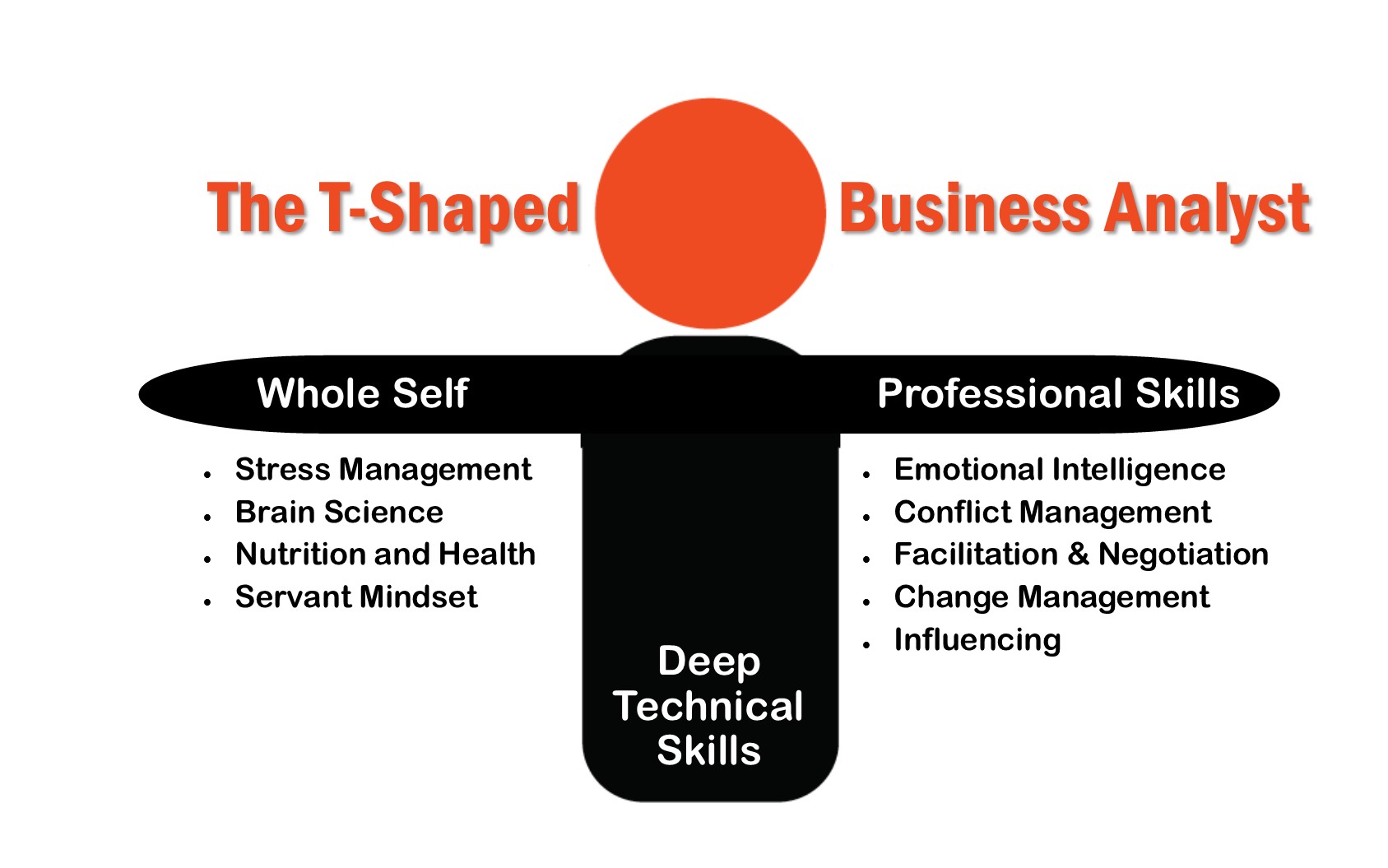
teh evaluat0rz
What do we see happening in-practice and at-scale for big tech evaluations these days?
big tech interviews are, as of mid 2021, still taking a cattle wrangling approach. You are seldom treated as an individual with a personal history and unique experience with ambition and lateral thinking skills.
big tech says they have the GPUs, TPUs, Neural Engines, and multi-million-server capability to process zettaflops of data in real time to shape the future of the planet, but they also continue to operate a 100% individual judgment, fear-based hiring approach and can’t even figure out “is hiring this hooman good value or bad value” without resorting to biased coin flips.
big tech interviews barely recognize the concept of T-Shaped high functioning generalists, much less super hybrid high-value multi-expert/generalists in Cleat or Hinge shapes. Not to mention: how can you be evaluated properly when, in certain circumstances, you are beyond your evaluators? the entire big tech hiring flow is just a crapped up mesa optimization problem where gaming the game wins the game, but actual ground-truth capability evaporates away due to anti-incentives towards actually being good at good.
how can an interview loop evaluate a single high performing person who looks like this on the inside, literally 8 departments worth of productivity, all encased in one 5 kg calcium protein truffle:
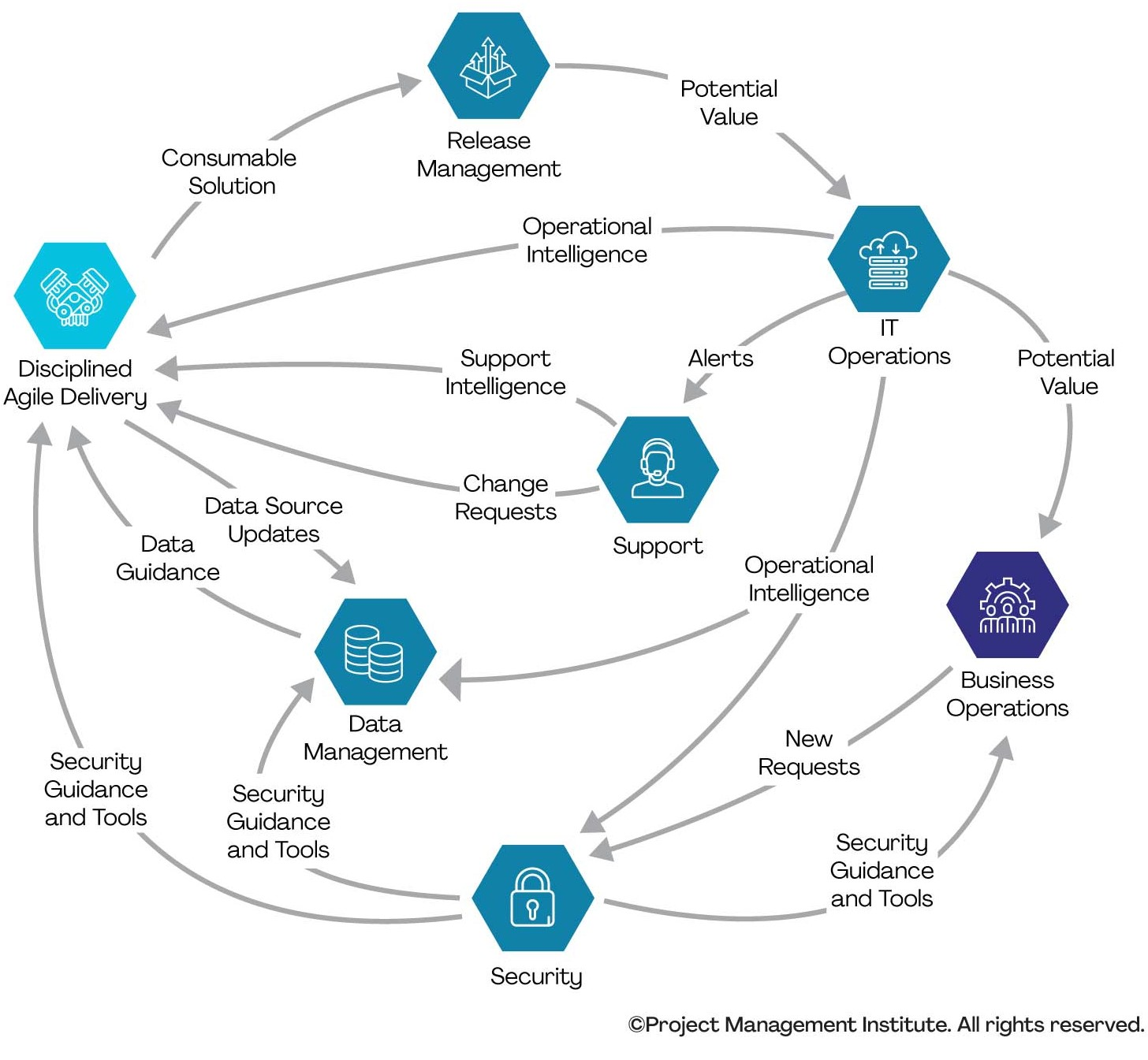
Instead of establishing a high correlation utility prior using publicly available performance output—combined with the ultra rare interview tactic of asking candidates what they actually want, big tech interviews demand “can you solve our algorithm of the day then pass our seven hour scientology personality background quiz” which is seemingly predicated on excluding as many people as possible from your organization instead of accepting competent (or—gasp!—ultra-competent) people, then working to improve them over time in ways best suiting both the organization and life goals of employees too.
The best employment candidates you can find will not subject themselves to endless levels of subservient pedantry because your recruiters and managers toe the line “this is how we do things—no exceptions!”
My favorite (and thus far completely useless) counterpoint to recruiters who get pedantic over historic credentialism is “so, when you acquired Twitch (or recent acquisition), did Justin (or recent founder) have to send in his resume? Did he have to go through a seven hour culture fit interview? When you acqui-hire failed YC companies so they can save face, what resume fields are you evaluating?” to which they reply “you aren’t special, you have to go through the normie process because nobody believes in you and your work, even though we have been selling code you wrote in our hosted service offerings since 2014, you yourself are not good enough to actually be trusted with anything.”
a divergence: why im awful at everything
There’s a hiring paradox every big tech outright ignores: people don’t perform well under evaluation.
When I’m asked to perform feats of code writing in front of other people, my brain basically goes blank.
I never attend “hackathons” because I can’t do work in front of other people. When I would go to SHDH events, it was always just for chats and meeting people, not like the hundred other people who would be doing actual projects the entire time. I just don’t do real-time public work, even though other people are great at it, because my process always feels like a fraud even though I’ve created some of the most optimized and highly scalable data platforms ever written by humans.
I seem to exist in either a social “hold it together, we can do this” mode or a technical “okay, let’s solve this problem through repeated trial and error” mode, but I can rarely mix “doing visible work” with “people watching my thought process.” It’s just a flat no-go every single time.
For me, at least, productivity is fugue. I’ve benchmarked it before and I have about a ~2 week memory of a current project before it starts to leave my working memory. Even now, at this 4,700 word mark of the article—I couldn’t tell you what the first half of the article says. Everything is flow state so it’s almost impossible for me to repeat or reproduce my goals on demand, and quadruple impossible when under direct high pressure observation by good-cop/bad-cop evaluators.
an analogy for “why can’t you reproduce this work on demand” would be: imagine if in an interview, they gave you a written paragraph and a blank sheet of paper. Your task is to write each individual ordinal finger digit you would use to type out each letter when re-typing the paragraph. You will be judged on time (to make sure you aren’t counting or re-visualizing a keyboard for every letter) and you will be judged for accuracy (no non-standard finger alignments). Of course it’s a ridiculous question because your “keyboard letter to finger” brain map isn’t in your conscious working memory, it’s localized in automatic physical correlative brain structures handling movement without needing to think about it.
In attempts to boost my hiring packet weight at megacorps, to try and reduce number of “prove yourself now” evaluations, I point out “hey look over at my goot hoob and my farticles! i just created my 100th repo and most are actually unique work” but then companies just say “no. we only evaluate on our evaluation. if you can’t produce graph traversal algorithms on-demand in-person you are a garbage worthless person who should give up and just go live under a bridge already.”
maybe i read too much into their rejections though.
the end
sometimes we just need to be in a place with no computer screen around.
some people can’t be evaluated because they are asd high dimensional knowledge weirdos who act like pseudorandom Q-learners yet still manage to generate more productive output in three months than legacy out of touch senior doods generate in six years.
overall, i dunno. i just want a place where i can access 40 million hours of toroidal-equivalent A100-equivalent time per year so we can fix all the world’s problems by force of our enlightened will alone.
be a cleat. be a henge. just don’t be normal. and always—always—fight for your right to party.
cheers and whatnot
- also, completely unrelated, youtube comments have been
broken recently for me, so clearly google only hires the most perfect
experts in all areas of everything ever and when they reject you during
the hiring process, you must be a subhuman worthless garbage person:
↩︎

google is never wrong. praise google.